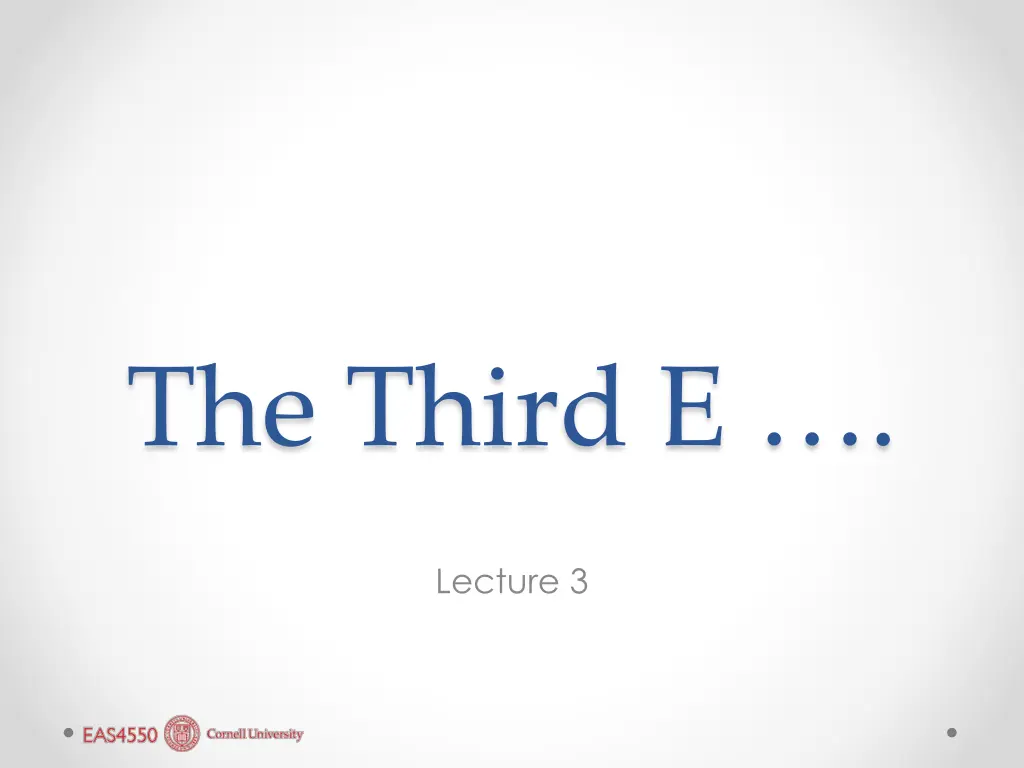
Understanding Enthalpy: Importance and Applications
Explore the concept of enthalpy, its significance in thermodynamics, and how it is measured and calculated in various experiments. Learn about enthalpies of reaction, formation, and fusion, and discover how this property helps predict natural reactions and weathering processes.
Download Presentation

Please find below an Image/Link to download the presentation.
The content on the website is provided AS IS for your information and personal use only. It may not be sold, licensed, or shared on other websites without obtaining consent from the author. If you encounter any issues during the download, it is possible that the publisher has removed the file from their server.
You are allowed to download the files provided on this website for personal or commercial use, subject to the condition that they are used lawfully. All files are the property of their respective owners.
The content on the website is provided AS IS for your information and personal use only. It may not be sold, licensed, or shared on other websites without obtaining consent from the author.
E N D
Presentation Transcript
The Third E . Lecture 3
Enthalpy Lecture 3
But first Uniting First & Second Laws First Law: dU = dQ + dW With substitution: dU TdS PdV For a reversible change: dUrev= TdSrev PdV
Defining Enthalpy Enthalpy is the heat gained or lost by the system if the change takes place at constant pressure and P V work is the only work done by the system: dH = QP More formally: H = U + PV Consequently: dH = dU + d(PV) = dU +PdV +VdP But recalling that dU TdS PdV What do we have left? Means constant P
Enthalpy and Heat dH TdS + VdP For a reversible reaction: dHrev = TdSrev + VdP And, if the (reversible) change takes place at constant pressure: dHP = TdSP = dQP
Measuring Enthalpies On reason enthalpies are important is that they are relatively easily measured. A devices used to measure enthalpies is called a calorimeter. Enthalpy is simply the heat given off or consumed in a transformation. Since there are different kinds of transformations, there are different kinds of enthalpies. Insulation
Enthalpies of Reaction, Formation, Fusion, For an isobaric experiment in which: 2H2 + O2 = 2H2O o the enthalpy is simply the heat given off by the reaction. o This is called a heat of reaction, Hr o If the reactants are elements, it is the heat of formation: , Hf Another experiment we might conduct is a phase change, e.g., melting ice to form (liquid) water. o Enthalpy, in this case, is just the energy we would have to add to the ice to melt it. o Formally, this is called the latent heat of fusion; to avoid confusion, we will call it the heat of melting, Hm (heat of crystallization is just the negative of this). o We can similarly define latent heat of evaporation (or condensation).
Value of Enthalpy It is usually easier to conduct experiments at constant pressure rather than constant volume. These kinds of experiments (e.g., combusting hydrogen, melting ice) provide the basic data of thermodynamics that allow us ultimately to predict the outcome of natural reactions (like weathering of rock). We can calculate other thermodynamic properties from the enthalpy.
Deriving Entropies Since: dHrev = TdSrev + VdP If we conduct an experiment at constant pressure, then: dHrev = TdSrev And if we also did the experiment at constant temperature, e.g., melting ice: S = H/T If the reaction is not at constant temperature (melting of rock would not be), we would have to integrate: S = T dH(T)
Calorimetry Again A calorimeter in simply a device in which we conduct a reaction, then measure the change in temperature in the vessel. But, we need to know something additional: How much energy change does that temperature change correspond to? In other words, how much energy would we have to put into the system to change its temperature by 1 K?
Heat Capacity The thing we would need to know about our system to convert a temperature change to heat is the Heat Capacity. We define it as: C = dQ/dT At constant pressure: CP = ( H/ T)P At constant volume since dU = dQ PdV CV = ( U/ T)V However, as we noted, experiments are usually not conducted at constant volume (except for gases), so mostly we will work with CP.
Heat Capacities of Solids Heat capacities of solids are complex functions of temperature as vibrational motions of atoms in solids is quantized. Theoretical calculation requires knowing all possible vibrational motions and energy levels. In practice, heat capacities are empirically determined. In geochemistry, the 5-term Haas-Fisher formulation is generally used: CP=a+bT -c T2+ fT2+gT-1/2 Where a, b, c, , g are constants empirically determined by experiment. We will use the simpler Maier-Kelley formulation: CP=a+bT -c T2
Boltzmann Distribution Law While energy is on average shared equally among atoms or molecules of a substance, this does not mean that in detail they all have exactly the same energy. Theoretical calculation of heat capacity requires knowing how energy is shared between atoms or molecules. This is given by the Boltzmann Distribution Law, which states that the probability of an atom being in energy state iis: Pi= e-ei/kT e-en/kT n kis Boltzmann s constant, the microscopic equivalent of the gas constant k = R/AN (where AN is Avagadro s number) and the sum is over all possible energy states.
Deriving Boltzmanns Distribution Law Consider a mineral sample, A, in a heat bath, B (B having much more mass than A), and assume they are perfectly isolated from their surroundings. The total energy of the system is fixed, but the energy of A and B will oscillate about their most probable values. The question we ask is what is the probability that system A is in a state such that it has energy EA? We assume that the number of states accessible to A when it has energy EA is some function of energy, i.e., (a) = (EA) Since all states are equally probable and the probability of a system having a given energy is simply proportional to the number of states the system possible: P = C o where C is again a constant. Thus the probability of A being in state a with energy EA is: Pa = CA (EA)
Since the total energy of the two systems is fixed, system B will have some fixed energy EB when A is in state a with energy EA, and: EB = E EA where E is the total energy of the system. As we mentioned earlier, is multiplicative, so the number of states available to the total system, A + B, is the product of the number of states available to A times the states available to B: Total = A B If we stipulate that A is in state a, then A is 1 and the total number of states available to the system in that situation is just B: Total = 1 B = (EB)
Thus the probability of finding A in state a is equal to the probability of finding B in one of the states associated with energy EB, so that: Pa = CB (EB) = CB (E EA) = CBeln (E EA) o where E is the total energy of the system (i.e., E = EA + EB). We can expand ln (E-EA) as a Taylor Series about E: 2 d2lnW dE2 2! EA + dlnW(E) dE lnW(E-EA)=lnW(E)-EA +... o But since B is much larger than A, E >> EA, higher order terms may be neglected, so: lnW(E-EA)@lnW(E)-EA dlnW(E) dE Substituting for d ln (E)/dE (Equ 2.48), we have: (E EA) = exp(ln (E) EA ) = (E)e EA and Pa = CB (E) e EA
Since the total energy of the system, E, is fixed, (E) must also be fixed, i.e., constant, so: Pa = Ce EA Substituting 1/kT for (Equ. 2.53), we have: Pa = Ce EA/kT We can deduce the value of the constant C by noting that Pi = 1, i.e., the probabilities over all energy levels must sum to one (because the system mustalways be in one of these states). Therefore: Pi = C e Ei = 1 so that C = 1/ e Ei Generalizing our result, the probability of the system being in state i corresponding to energy ei is: e-ei/kT e-en/kT Pi= n Which is the Boltzmann Distribution Law
Boltzmanns Distribution Law In English: Energy among atoms is like money among men: the poor are many and the rich few. Occupation of vibrational energy levels. The probability of an energy level associated with the vibrational quantum number n calculated from the Boltzmann distribution function of n for a hypothetical diatomic molecule at 273 K and 673 K.
The Partition Function The denominator of the Boltzmann Distribution Law is a key quantity in statistical mechanics called the Partition Function: e-en/kT n Q= Text explains how it is related to energy and entropy. We will use it later in the course to calculate equilibrium constant and isotope fractionation factors.
Relationship of Entropy to other State Variables =CV S T T V =CP S T T P S P =-aV T =a b S V T
Calculating Entropy and Enthalpy Changes Since: H T P = CP dH =CPdT o then The enthalpy change of a substance heated from T1 to T2 is then: T2 H = CPdT T1 For an entropy change it is: CP TdT T2 S= T1
What if both Temperature and Pressure Change? Entropy dependence on pressure is: S P T But, in a natural process, T and P will likely change simultaneously! o For example, a rising parcel of air or sinking parcel of seawater will experience simultaneous changes of P and T. Does it matter? =-aV P2 S = -a VdP So: P1 o (for gases, V will be a function of P; we can sometimes assume solids are incompressible). We need to do both the T and P integrals!
No! For state functions, the result does not depend on the path taken. Entropy and enthalpy are state functions. The entropy change for an isothermal pressure change followed by an isobaric temperature change will be the same as a simultaneous change of both. (Caveat: we must use the appropriate values of constants or functions (e.g., at the relevant T; CP at the relevant P).
Hesss Law Once we have experimentally measured enthalpies of formation for substances, we can calculate enthalpies of reaction using Hess s Law: i Hr= niHf ,i Where is the stoichiometric coefficient (by convention negative for reactants, positive for products) and the sum is over all compounds in the reaction. So, for the reaction 2MgO + SiO2 = Mg2SiO4 Hr = Hf,Mg2SiO4 - 2Hf,MgO- Hf,SiO2
Standard State Enthalpies We define the enthalpies of elements (or elemental compounds such as O2) in the standard state of 298.16K and 0.1 MPa (25 C, 1 atm) as 0. o Units of enthalpies are what? We can then determine standard states of formation (from the elements) of compounds such as SiO2 as the enthalpy of reaction to form the compounds under standard state conditions: Hof,SiO2= Hr where the reaction is: Si + O2 = SiO2


